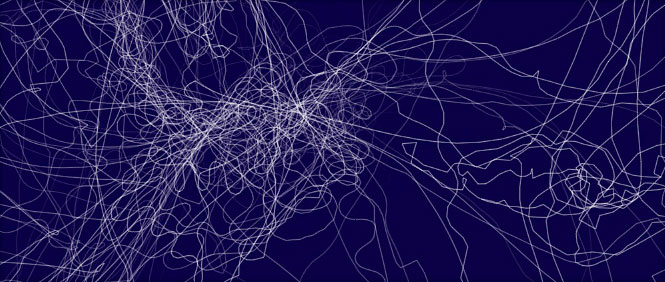Printed from www.flong.com
Contents © 2020 Golan Levin and Collaborators
Golan Levin and Collaborators
Projects
Sort by : Author | Date | Name | Type
- Installations
- Ghost Pole Propagator II
- Augmented Hand Series
- Eyeshine
- Re:FACE, Anchorage Version
- Merce's Isosurface
- Double-Taker (Snout)
- Opto-Isolator
- Eyecode
- Interstitial Fragment Processor
- Reface [Portrait Sequencer]
- Ghost Pole Propagator
- Footfalls
- Scrapple (Installation)
- The Manual Input Workstation
- Interactive Bar Tables
- Messa di Voce (Installation)
- Hidden Worlds of Noise and Voice
- Re:MARK
- Introspection Machine
- Audiovisual Environment Suite
- Dakadaka
- Rouen Revisited
- Performances
- Ursonography
- Scrapple (Performance)
- The Manual Input Sessions
- Messa di Voce (Performance)
- Dialtones (A Telesymphony)
- Scribble
- Net.Artworks
- Terrapattern
- Moon Drawings
- Free Universal Construction Kit
- QR Codes for Digital Nomads
- The Dumpster
- Axis
- JJ (Empathic Network Visualization)
- The Secret Lives of Numbers
- Alphabet Synthesis Machine
- Obzok
- Sketches
- Stria
- Dendron
- Slamps
- Banded Clock
- Floccus
- Stripe
- Meshy
- Directrix
- Yellowtail
- Streamer
- Blebs
- Self-Adherence (for Written Images)
- Poster design for Maeda lecture
- The Role of Relative Velocity
- Segmentation and Symptom
- Floccular Portraits
- Curatorial
- Mobile Art && Code
- ART AND CODE
- Code, Form, Space
- IEEE InfoVis 2008 Art Exhibition
- Solo exhibition at bitforms gallery
- IEEE InfoVis 2007 Art Exhibition
- Signal Operators
- Commercial / Industrial
- Motion Traces [A1 Corridor]
- Civic Exchange Prototype
- Amore Pacific Display
- Interactive Logographs
- Interval Projects
- Media Streams Icons
- Miscellaneous
- NeoLucida
- Rectified Flowers
- GML Experiments
- New Year Cards
- Admitulator
- Glharf (or Glarf)
- Finger Spies
Floccus
1999 | Golan Levin
Floccus (Golan Levin, 1999). In 1999 I began to study the means by which dynamic graphical lines could convey a plausible sense of physicality. After some experimentation I developed a model for representing the underlying structure of "physical" lines, in which a finite-element, mass-spring-damper simulation is composed of virtual particles connected by alternating linear and torsional springs. The model has the effect of simulating the tensile properties of thin physical filaments, such as hairs or twigs. I used this physical model to create a series of reactive drawing systems, including Floccus.
In Floccus (the name is a Latin term for "hairball"), ductile filaments drawn by the user swirl around a shifting, imaginary drain centered at the user's cursor. These filaments — torn by conflicting impulses to simultaneously preserve their length, yet also move towards or away from the cursor — find an equilibrium by forming gnarly, tangled masses.
Resources
![]() Floccus can be experienced in this interactive Java applet.
Floccus can be experienced in this interactive Java applet.
(Some related interactive applets on this web site can be found here:
Meshy, Dendron, Obzok, Stripe, Stria, Streamer, Banded Clock, Dakadaka.)
A full-screen, sonified version of Floccus is one of the seven modules in the Audiovisual Environment Suite, and is available for purchase from Software Art Space.
More high-resolution images of Floccus are available in this Flickr photoset.
A modified version of Floccus was used to create Floccular Portraits.



